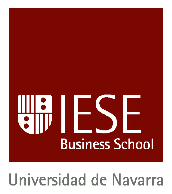
Recent research on business models that target the ‘Bottom of the Pyramid’ (BOP), the vast untapped potential market made up of the world’s poorest people, has emphasized the need for multinationals to radically change their approach and to fundamentally rethink every step in their supply chains. Companies are advised to build new resources and capabilities, to implement multiple strategies concomitantly, and to partner with multiple constituencies that often have different strategic objectives. The complexities and potential costs involved in these recommendations, we believe, constitute severe hurdles to executive decision making and to realising the financial returns that would justify such investments.
This paper develops a strategic perspective based on observation and analysis of two successful, alternative BOP models. Our strategic framework is complementary to current recommendations and scales down many of the implementation hurdles. The cases demonstrate how companies can leverage their existing corporate capabilities to provide scale to proven and already existing organizations at the BOP, and we illustrate how this approach can provide a platform for building the commercial enterprise that creates necessary financial returns. Our analysis is grounded in and reflects important insights from business strategy research, in particular the resource based view (RBV) and recent work on strategic alliances. The unique context of these business models characterized by deep and widespread poverty expands our understanding of how strategic factors can be configured to create value.
See full Article (paid subscription required).



